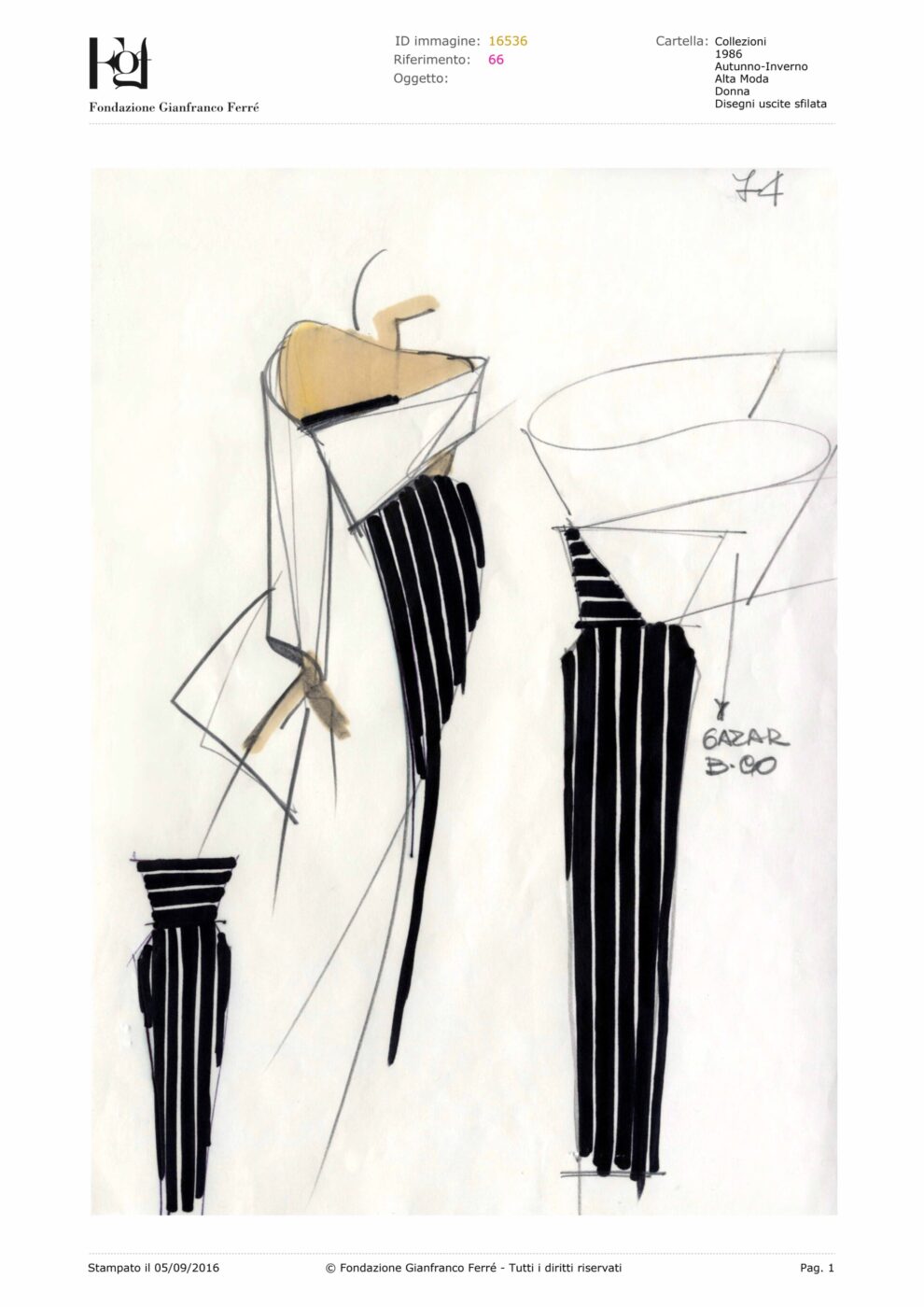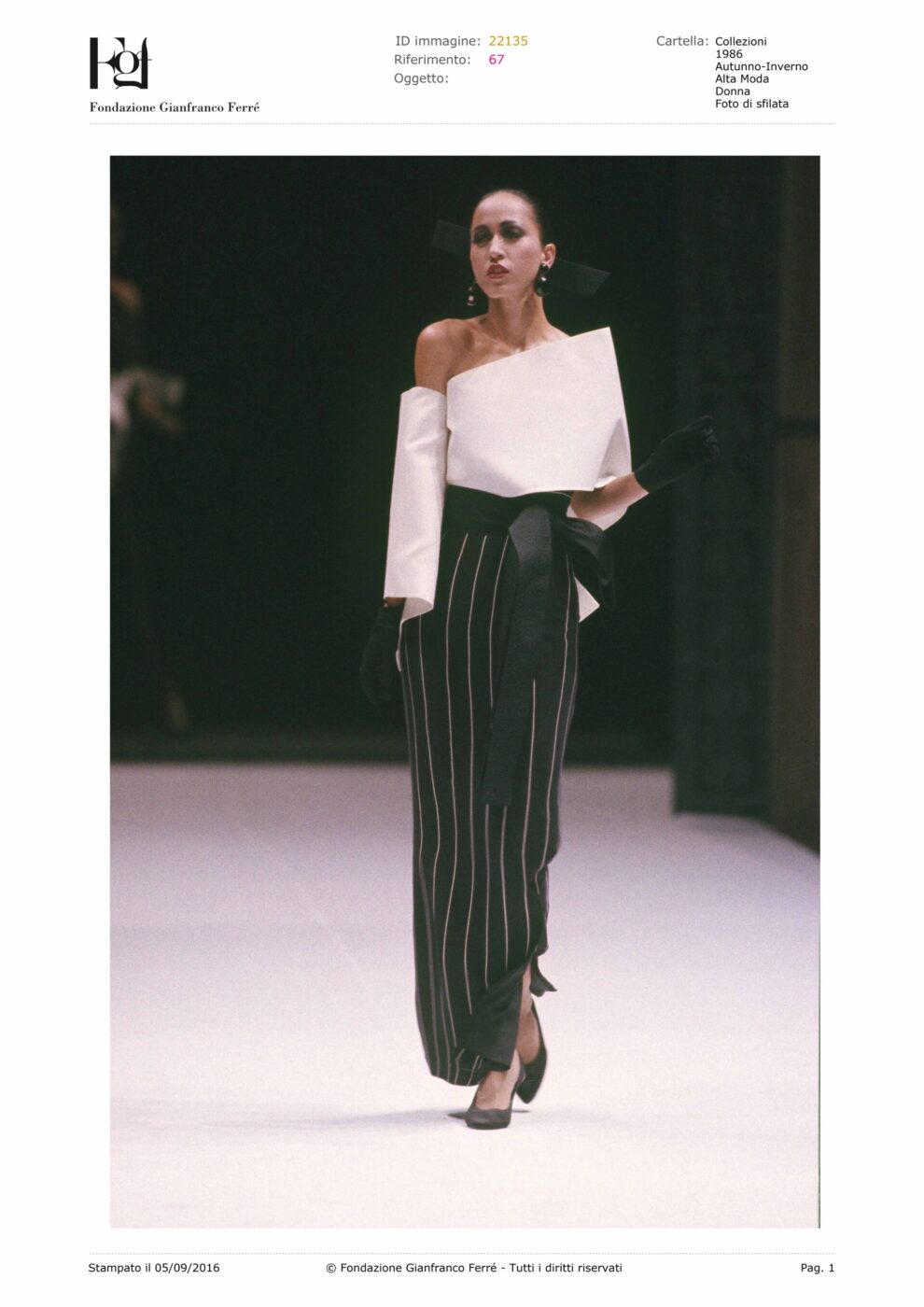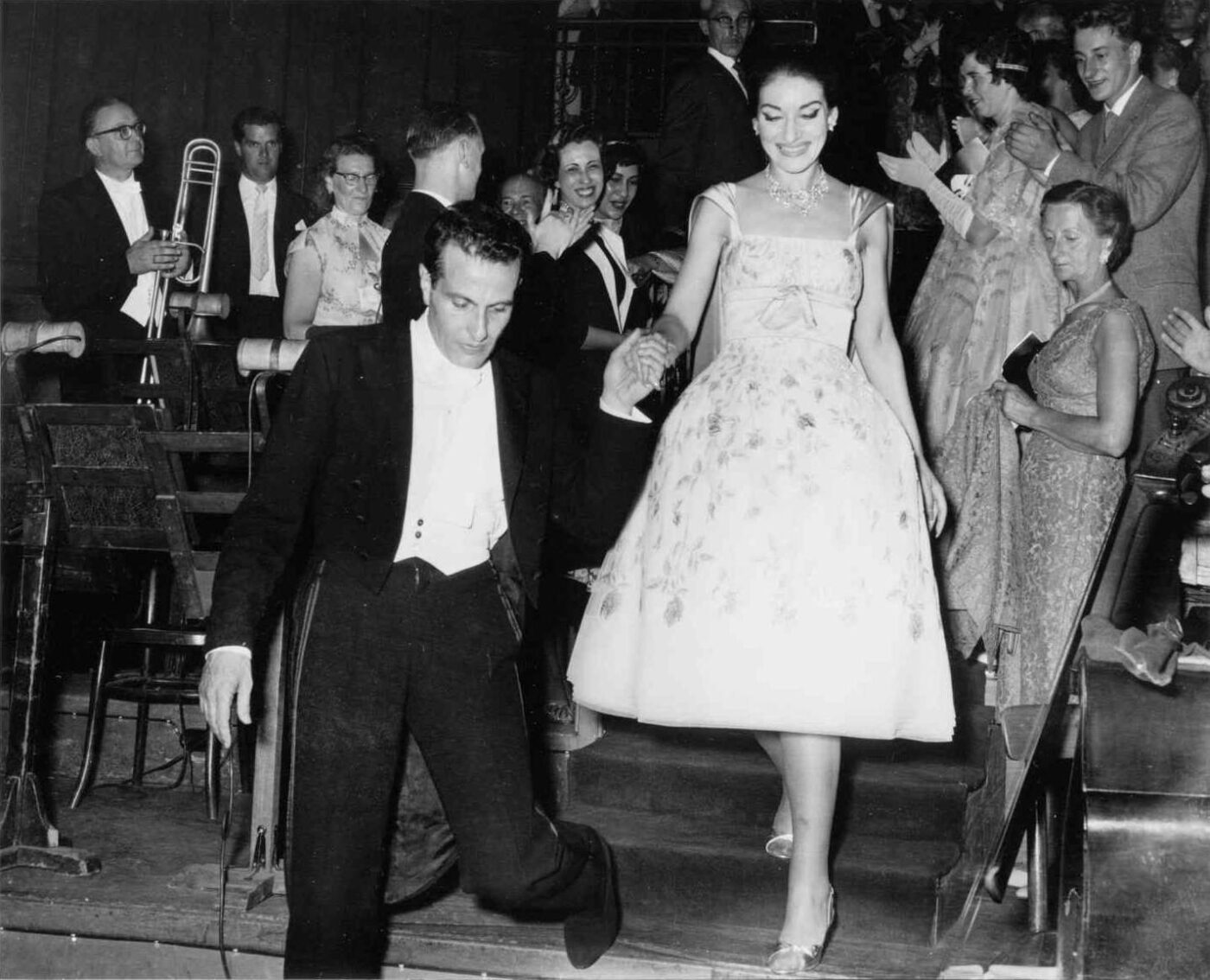Mariuccia Mandelli a.k.a. Krizia (1925 – 2015)
Bergamo-born Mariuccia Mandelli is widely regarded as “the godmother of Italian fashion”–no easy feat, but well earned considering her brand Krizia was one of the most popular in fashionable Milan during the 1960s and 70s. Though her parents pushed her to become a primary school teacher, and she was one for a few years, she eventually followed her passion of fashion design, and we’re all the better for it; we can credit Mandelli as the first to present scandalously short hot pants on the runway in 1971.
Fast forward 15 or so years and Mandelli wasn’t on runways, but highways. She got her start driving around to Milanese shops and selling the designs that she packed tight in her Fiat 500. Noticed by a Grazia magazine journalist, word got round, and ten years later Mandelli held the first fashion show for her brand Krizia–whose name comes from the ancient Greek philosopher Plato’s dialogue, Κριτίας, on female vanity–at Florence’s Palazzo Pitti, for which she was awarded a prestigious Critica della Moda award. She later posed for a portrait by Andy Warhol and, thanks to her seemingly radical views and circle of friends, acquired the nickname of “Crazy Krizia”. In an interview just a short while before her passing, Mandelli spoke to her ideal Krizia woman: “la mia donna è libera” (“my woman is free”), she said, solidifying her place as a revolutionary in the annals of Italian fashion history.
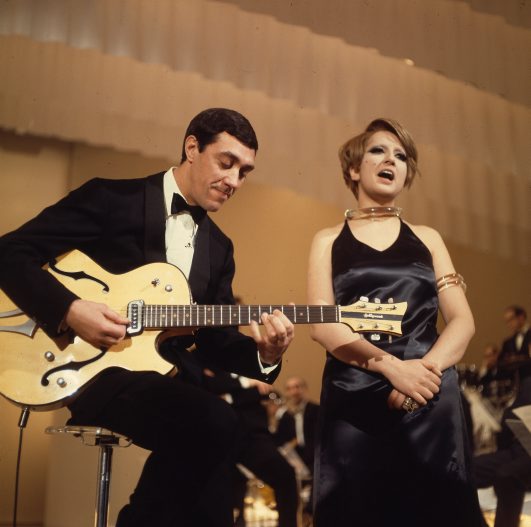
Mina wearing Krizia on Sabato Sera; Courtesy of PDU
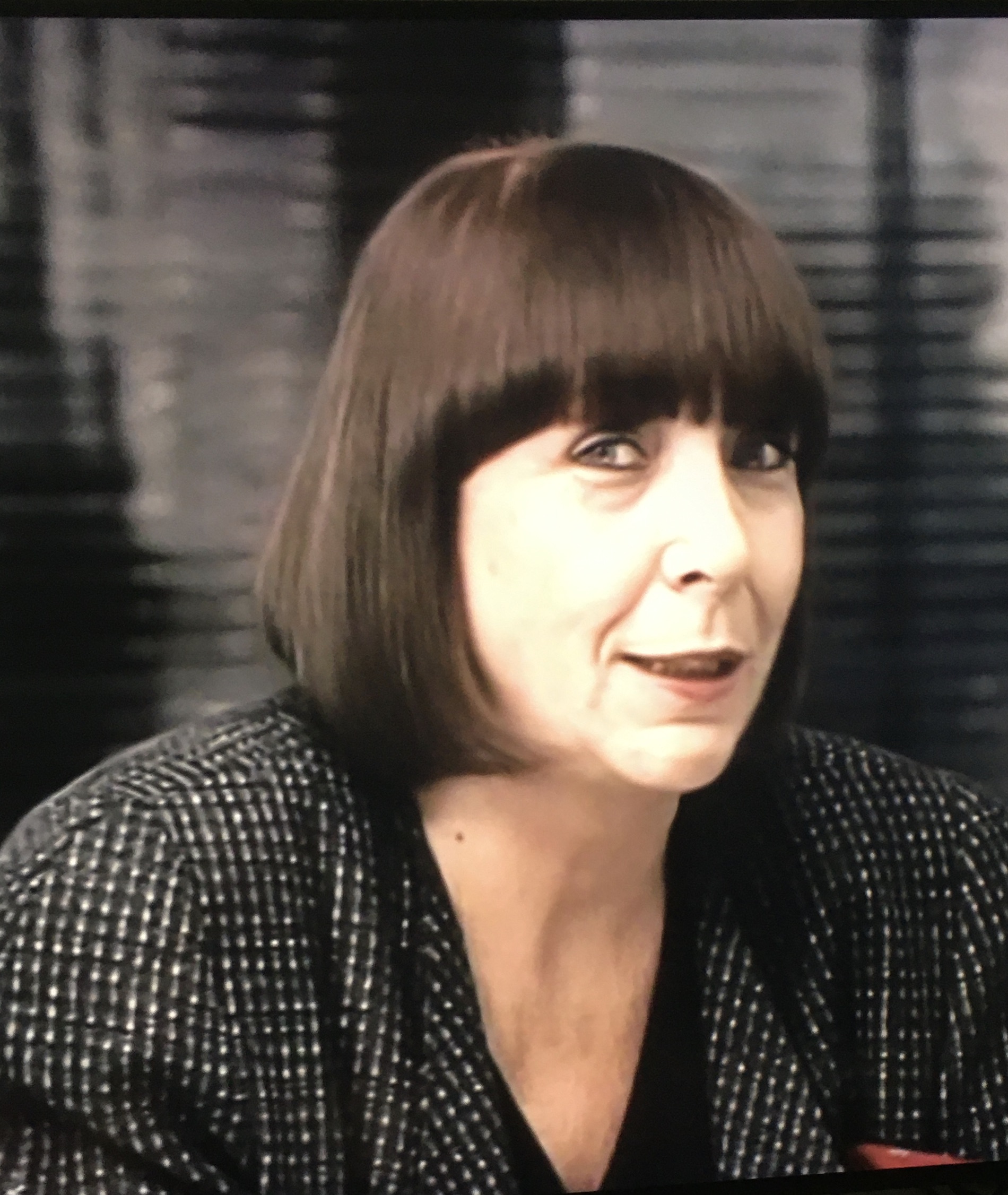
Mariuccia Mandelli; Photo by Manuelarosi - Own work, CC BY-SA 4.0, https://commons.wikimedia.org/w/index.php?curid=91820044
Gianfranco Ferré (1944 – 2007)
Gianfranco Ferré is perhaps best known for his time as Creative Director of Christian Dior from 1989 to 1996, but his own eponymous brand was one of the most influential of the 1980s and 90s. Ferré’s fashion was profoundly influenced by his initial pursuit of architecture school in Milan; elaborate structured and sculptural silhouettes–like exaggerated seams and voluminous white shirts with oversized cuffs, signatures of his designs–gained him worldwide renown as the “architect of fashion”.
Ferré’s career began as an accessories designer for Walter Albini, but, in 1974, he established his own brand for both womenswear and menswear. Travels in India inspired his use of yellow, red, and fuchsia, as well as an affinity for paisley, which brought an international touch to 1980s Milan. It was his unusual appointment to the house of Dior in 1989 by Bernard Arnault, however, that catapulted Ferré to global fame. His arrival in Paris raised many eyebrows; it was unheard of at the time for a Parisian couture house to hire a foreign designer. Ferré, however, soon gained a loyal following of Dior clients, establishing himself as a celebrated designer even in the competitive Parisian scene. Following his tenure at Dior, the designer returned to Milan and continued working under his own label until his untimely death at age 62.
Famed for his flair for tailoring and androgynous silhouettes, Gianfranco Ferré remains one of the most celebrated Italian designers long after his death.
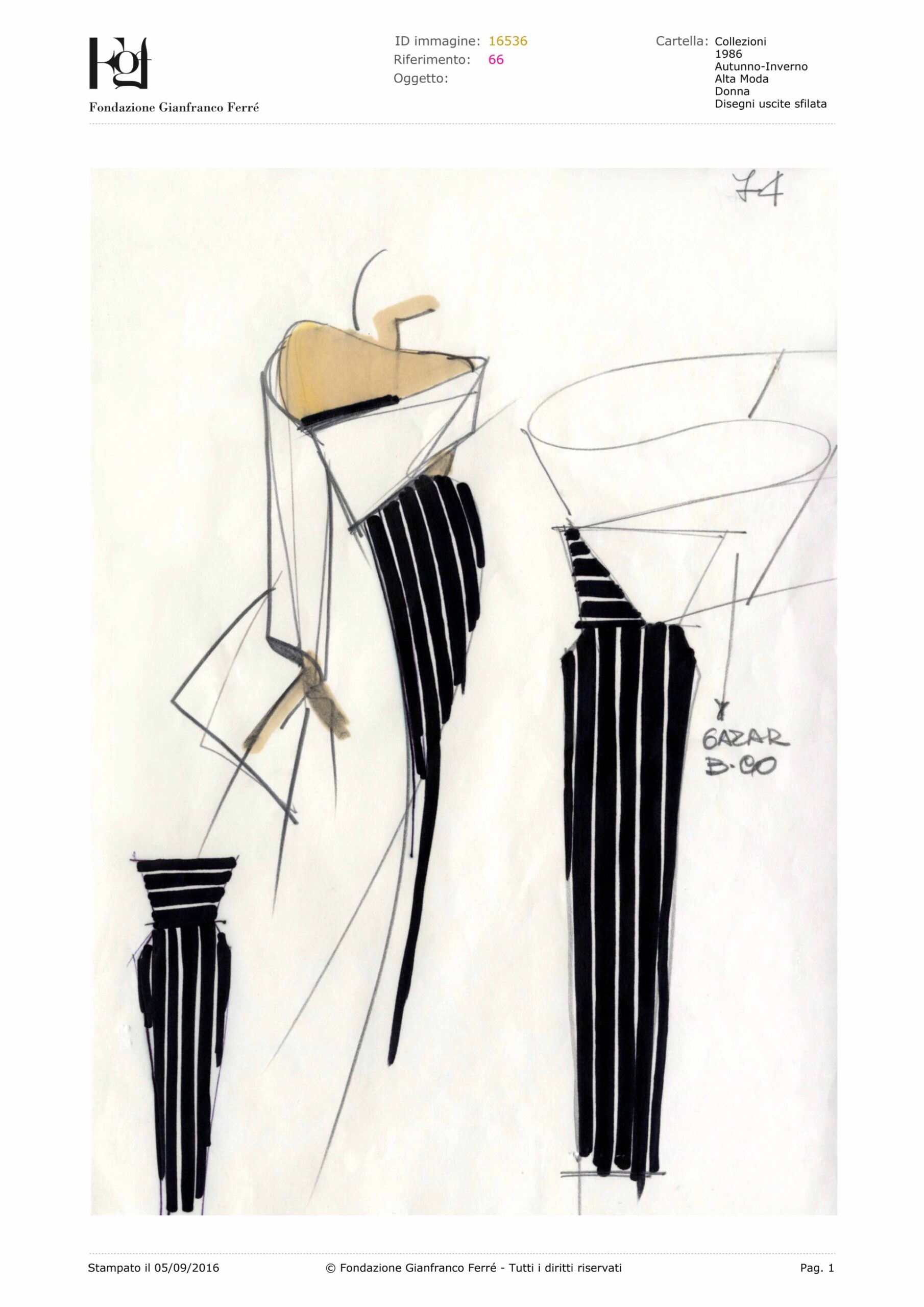
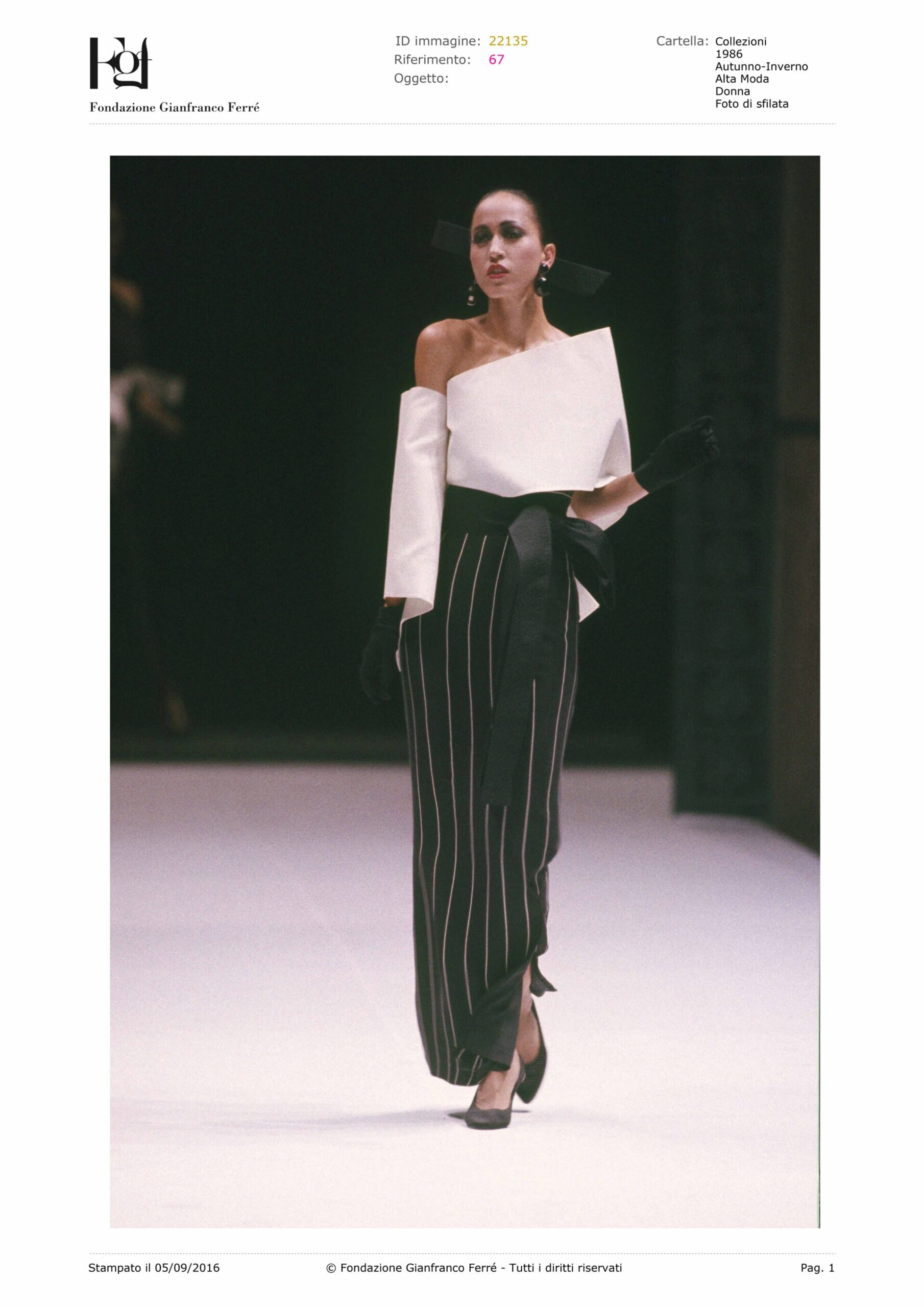
Courtesy of © Fondazione Gianfranco Ferré
Elio Fiorucci (1935-2015)
Fiorucci: a brand synonymous with disco culture, tight jeans, and t-shirts with cherubs wearing sunglasses–the unofficial uniform of the 1980’s cool kids. The origins of this famous brand are much humbler than you might expect, however: at age 14, Elio Fiorucci began working at the family shoe shop in Milan alongside his five siblings, but was soon designing shoes of his own. Earning money from his original designs, Fiorucci used his profit to travel the world for inspiration, jetting off to Ibiza, Mexico, and, most significantly, London during the Swinging Sixties. Galvanised by the radical styles of Carnaby Street and the King’s Road, Fiorucci, upon his return to Italy, founded his own fashion label inspired by the trends set by British brands Mary Quant and Biba.
Uninterested in the path laid out by heritage Italian brands, the young designer set out to create a brand more daring, eclectic, and disruptive than anything Italy had ever seen. Fiorucci stores had Keith Haring art on the walls, live DJ sets, and in-store bars serving cocktails and fast food–many refer to Fiorucci as the inventor of the concept store. His New York outpost even garnered the nickname “daytime Studio 54” for its wild atmosphere and see-and-be-seen status for bright young things. From an office inside the store, Andy Warhol started Interview magazine.
Beyond experiential retail, Fiorucci might be best known for inventing stretch jeans: this denim, with the addition of lycra to create an almost spray-on effect, was brilliantly shocking at the time. You’ll find Elio Fiorucci’s legacy not just in denim, but in the Sister Sledge jam He’s The Greatest Dancer: “He wears the finest clothes, the best designers heaven knows, ooh, from his head down to his toes, Halston, Gucci, Fiorucci…”
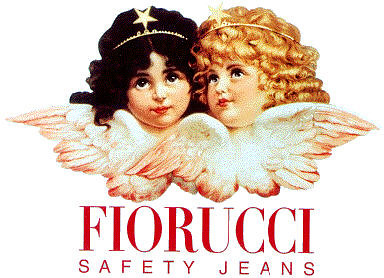
Fiorucci Logo
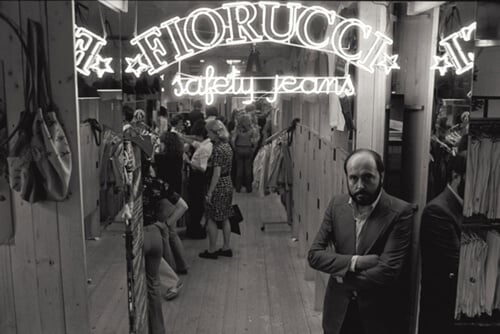
Elvira Leonardi Bouyeure a.k.a. Biki (1906 – 1999)
Fashion and music often go hand in hand, and Elvira Leonardi Bouyere’s life certainly goes to show. Born in Milan just after the turn of the century, Bouyeure possessed an affinity for music from a young age thanks to her grandfather, the celebrated composer Giacomo Puccini. It was Puccini who gave Bouyeure her unusual nickname of “bicchina” as a child, meaning “naughty little one”, which later evolved into “Biki”.
After many trips to Paris for a fashion education–and where she met her husband, art collector Robert Bouyeure–Bouyeure opened her own label in Milan in 1934 and went on to open stores in Zurich, Saint Tropez, and Portofino. Arguably the first celebrity stylist, Bouyeure’s childhood was spent in the company of famous musicians and theatre actors, so it’s no surprise she naturally gravitated towards the stars of stage and screen when she founded her brand. At Bouyeure’s hands, Biki designs dressed the likes of Sophia Loren and Brigitte Bardot, but it was the opera singer Maria Callas who really made Biki’s name. When a young Callas arrived in Milan in the 1950s to perform at the famed La Scala, she was criticised for her unfashionable dress sense. Taken by Callas’s performances, Bouyeure offered to dress the singer for all public appearances. Callas acquiesced and became a worldwide fashion icon. The singer wore Biki designs until the dramatic end to her career, and Bouyeure went down in history as the OG celebrity stylist.

Maria Callas 1959
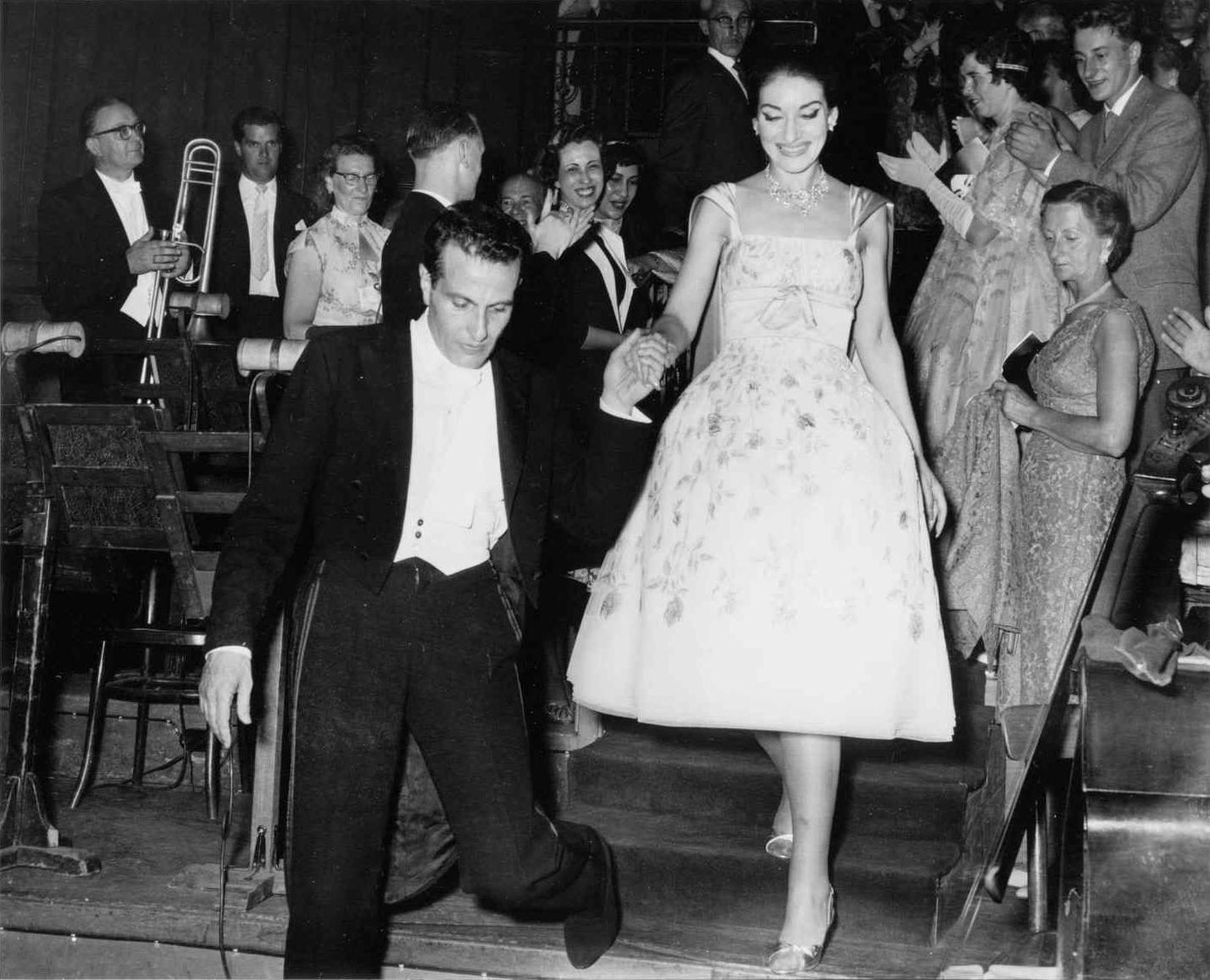
Maria Callas July 11th 1959
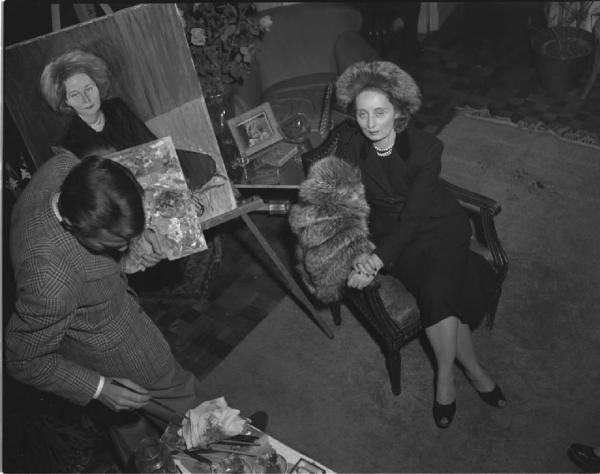
Biki in the 40's; Photography by Federico Patellani
Mila Schön (1916 – 2008)
Born Maria Carmen Nutrizio–nicknamed Mila–in 1916 to Italian parents in Dalmatia, Mila met and married a wealthy Austrian businessman in Milan. As an affluent young woman in post-war Italy, Schön was a regular client of couturiers Cristobel Balenciaga and Christian Dior; following her divorce and subsequent financial collapse, the young Italian, no longer able to afford the finest couture, decided to design her own clothes. Her designs soon gained a loyal clientele of well-heeled Italian women, and Schön presented her first collection in 1965 at Palazzo Pitti. By the following year, she had opened a store on Milan’s famed Via Monte Napoleone.
Her designs were recognisable for their precise cut and elegant, minimal lines, though Schön’s signature will always be “double-face” wool. Her distaste for shiny linings inspired her to create reversible coats, which became an essential style of the decade. Schön’s label was favoured by elegant society women in the 60s, most notably by Jacqueline Kennedy and her sister Lee Radziwill, whom Schön dressed in a beaded tunic coat for Truman Capote’s 1966 Black and White Ball. Her success landed her the gig of designing Alitalia air hostesses’ uniforms in 1969, and Schön’s take saw elegant green wool suits with miniskirts and matching bow hats. Several of Schön’s designs are now showcased in New York’s Metropolitan Museum of Art and London’s Victoria & Albert Museum.
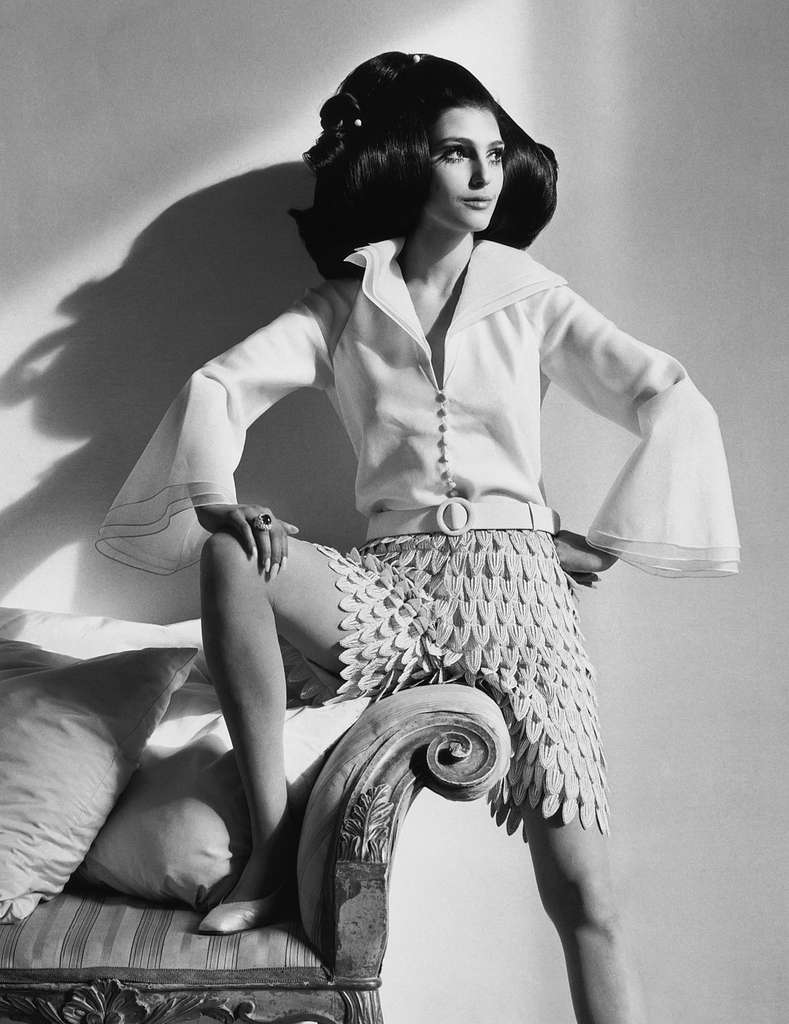
Benedetta Barzini in Mila Schon Rome,1968
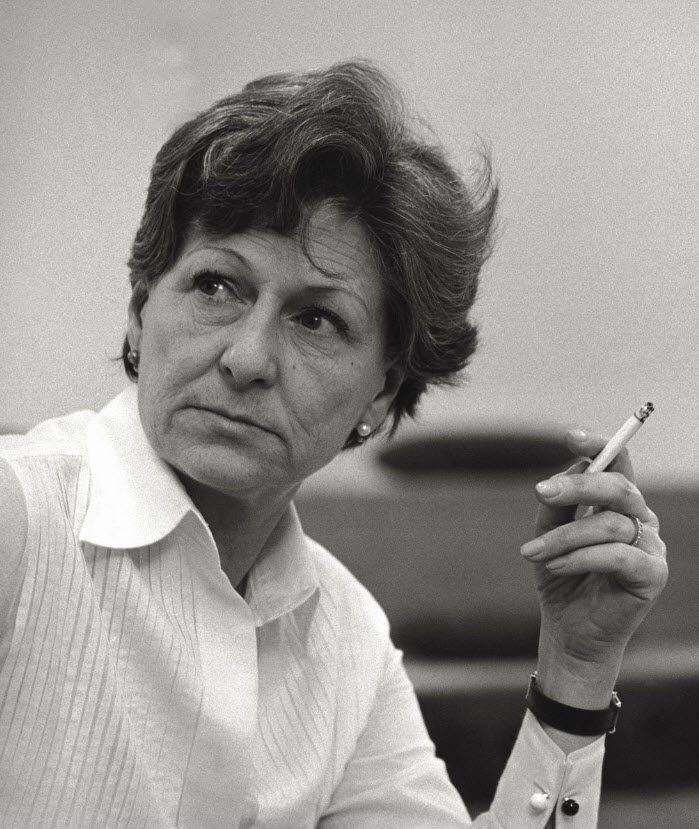
Mila Schön in her atelier 1969; Courtesy of Mondadori
So many of these former fashion giants are now sadly fading from memory, but their legacies live on in the cuts, colours, and silhouettes we wear today. It would be impossible to list every Italian designer who has helped shape the fashion industry over the years, and I hope to be forgiven for those not included. Just remember that the fashion capital of Milan was built upon their shoulders too.





